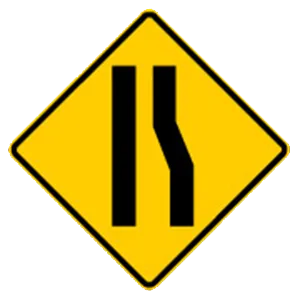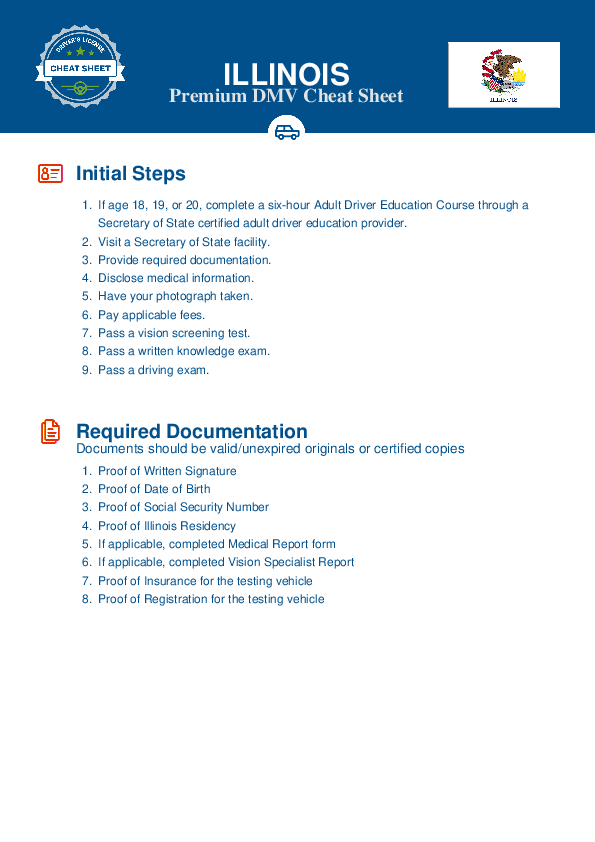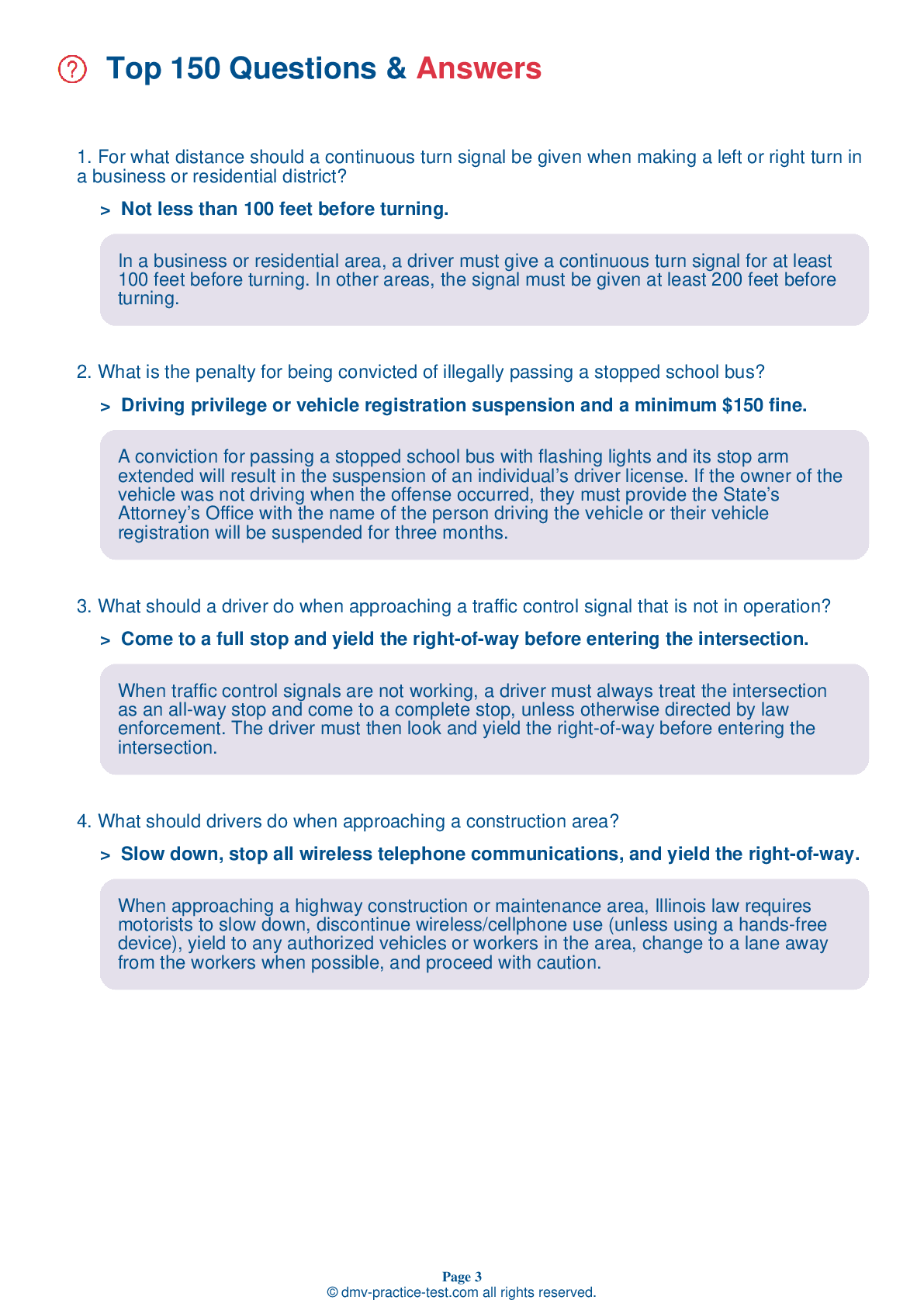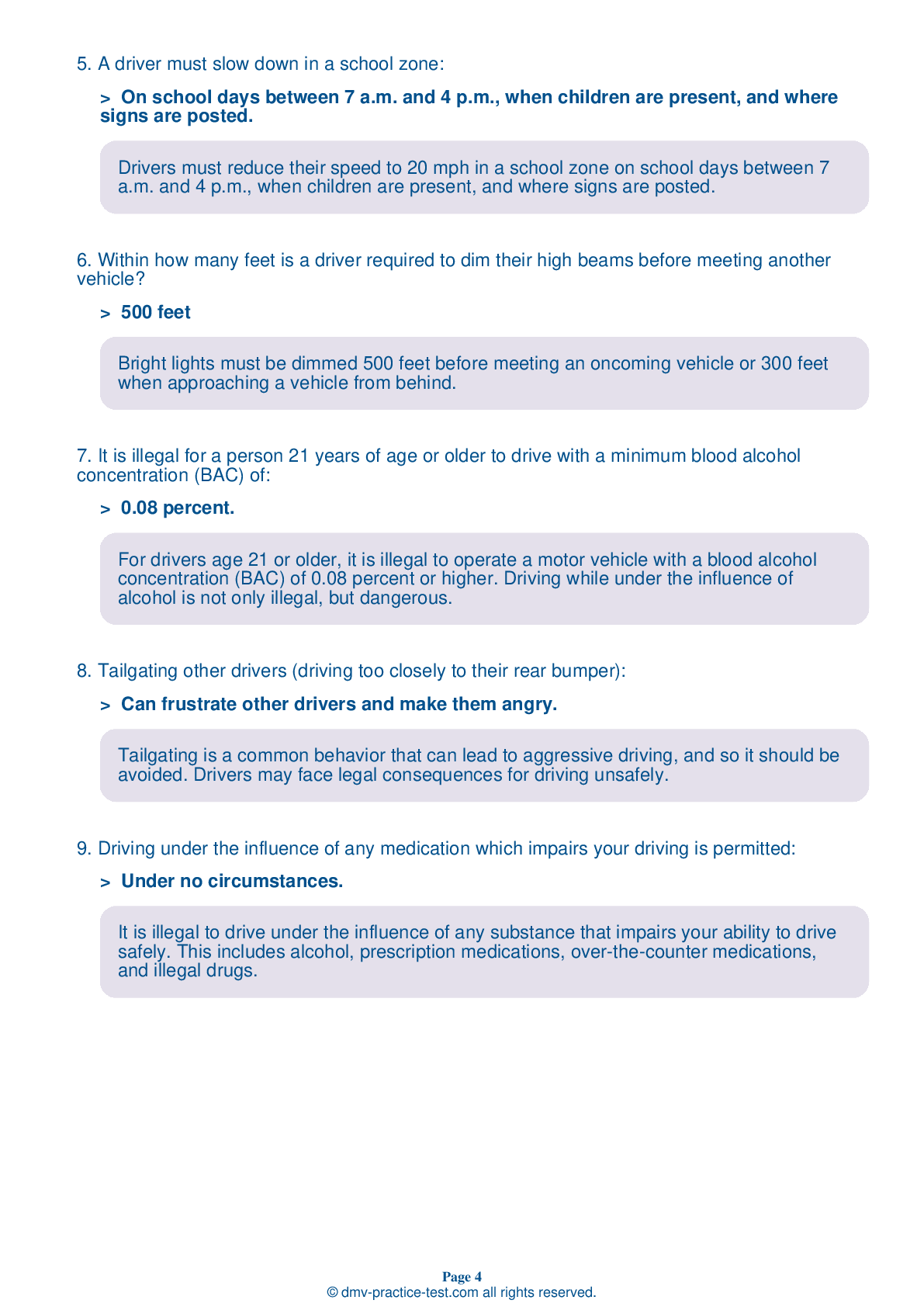FREE Illinois DMV Practice Test #13 Page 2 of 3
For January 2025, this set of Illinois DMV practise tests has been updated. It includes questions based on the most important traffic signs and rules for 2025 from the Illinois Driver Handbook. To study for the DMV driving permit test and driver's licence exam, use actual questions that are very similar (often identical!) to the DMV driving permit test and driver's licence exam.
Each question on the practise exam has a tip and explanation to help you recall the ideas. Questions about traffic rules, traffic signs, and driving statutes, as well as information from the Driver Handbook, will be included in the written portion of the official DMV test.
You must properly answer 38 of the 35 questions to receive a passing mark. To help you prepare for your Illinois instruction permit or driver's licence, take our DMV practise test.
The DMV exam is offered in a variety of languages.
Using any form of testing help will result in an automatic fail, and the DMV may take further action against your driver's licence, so avoid it.
13 . When an authorized vehicle using its sirens and flashing lights approaches a vehicle, the driver should pull to the right-hand edge of the roadway and wait for the emergency vehicle to pass.
When being approached by an emergency vehicle that is using its lights and/or sirens, you must immediately pull to the right side of the road and allow it to pass.
15 . A solid yellow arrow on a traffic signal means:
A solid yellow arrow means that the protection of a green arrow is ending. If you are turning in the direction of the arrow, you should prepare to stop and yield the right-of-way to oncoming traffic before turning.
16 . When experiencing a tire blowout, the driver should apply the brakes quickly and pull off the roadway to check the tire.
If you experience a tire blowout, you should ease your foot off the gas pedal, keep a firm grasp on the steering wheel, pull safely off the roadway, and check the tires. You should not brake suddenly.
17 . As your speed increases, it is important to:
Your vehicle's stopping distance increases as your speed increases. When driving at high speeds, it is important to look well ahead of your vehicle to allow yourself space to safely react to hazardous situations.
18 . Any amount of alcohol in the blood may affect a driver's:
A driver’s ability to safely operate a vehicle may be impaired at any BAC level, even a level lower than the legal limit. Any amount of alcohol can affect one’s judgment and physical coordination. Driving under the influence of even a small amount of alcohol can lead to criminal charges.
19 . If you park facing uphill where there is no curb, set the parking brake and:
When parking uphill on a road that does not have a curb, your front wheels should be turned to the right (toward the edge of the road). This will ensure that the vehicle will roll off of the road if the brakes fail.
20 . Blue traffic signs offer information on:

Blue signs on the roadway are service signs. They are used to provide information about motorist services, such as upcoming rest areas, food options, or nearby hospitals.
21 . The best way to avoid a dangerous situation while driving is to:
Always be aware of what is happening around your vehicle. Constantly observing your surroundings to the front, sides, and rear of your vehicle will help you see problems that may require you to change speed or roadway position.
23 . This sign is used to warn drivers that:





